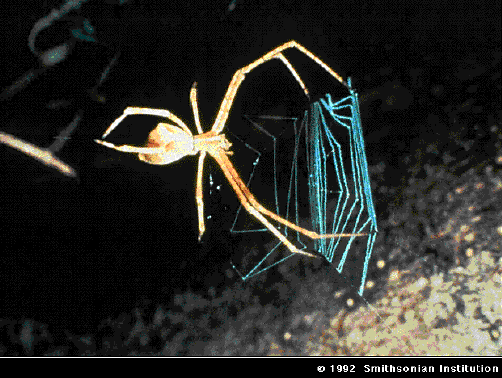



Cheliceramorpha: Life History and Ecology






Chelicerates occupy a variety of roles in the ecology of marine systems and on land as well. The above picture from the Smithsonian shows a spider upon its web. While many spiders build webs, others do not, but instead ambush prey as it passes by. This is also the tactic used by scorpions, another group of chelicerate predators. The predatory habits of these critters helps to control insect populations in many parts of the world.
Some arachnid chelicerates are parasites, such as ticks and mites. They live upon the bodies of other animals and feed on the blood, skin, or hair. Some of these carry diseases, which they pass on to the host when they feed. Still other chelicerates are tiny organisms which feed on detritus, the bits of decaying matter that accumulate on and below the ground. The first terrestrial chelicerates are believed to have been detritus feeders.
Parental care is not common among the chelicerates, but some scorpions will carry their young on their backs for a time. In most cases, however, no such care is provided, and the young must fend for themselves from the time they hatch. Survival is then dependant on the fact that large numbers of eggs are produced at a time, and it is likely that at least a few will survive.


